The national exposure a Cinderella team gains from an NCAA tournament appearance can draw a lot of attention to a school. It can also drive increases in school merchandise sales, Google searches, donations, and applications. This exposure is something that is often out of reach for a smaller school, except with a large marketing campaign.
The NCAA Men’s Basketball Tournament is often called “March Madness.” Each year, 68 teams accept an invitation to play in the tournament with a goal of advancing to the Final Four. The field of teams consists of conference champions and at-large bids. Some of these teams, such as Duke, North Carolina, Kentucky, and Kansas, are considered “Blue Bloods” and are perennial participants, often vying for a number one regional seed. Other teams are from smaller schools or lesser-known conferences. These teams resemble the classic character who showed up to the ball with little fanfare but earned her moment in the spotlight at “The Big Dance.” For this reason, these squads are referred to as “Cinderella teams.”
Over the years, Cinderella teams have made some memorable tournament runs. Athlon Sports listed its top 10 Cinderella teams of all time:
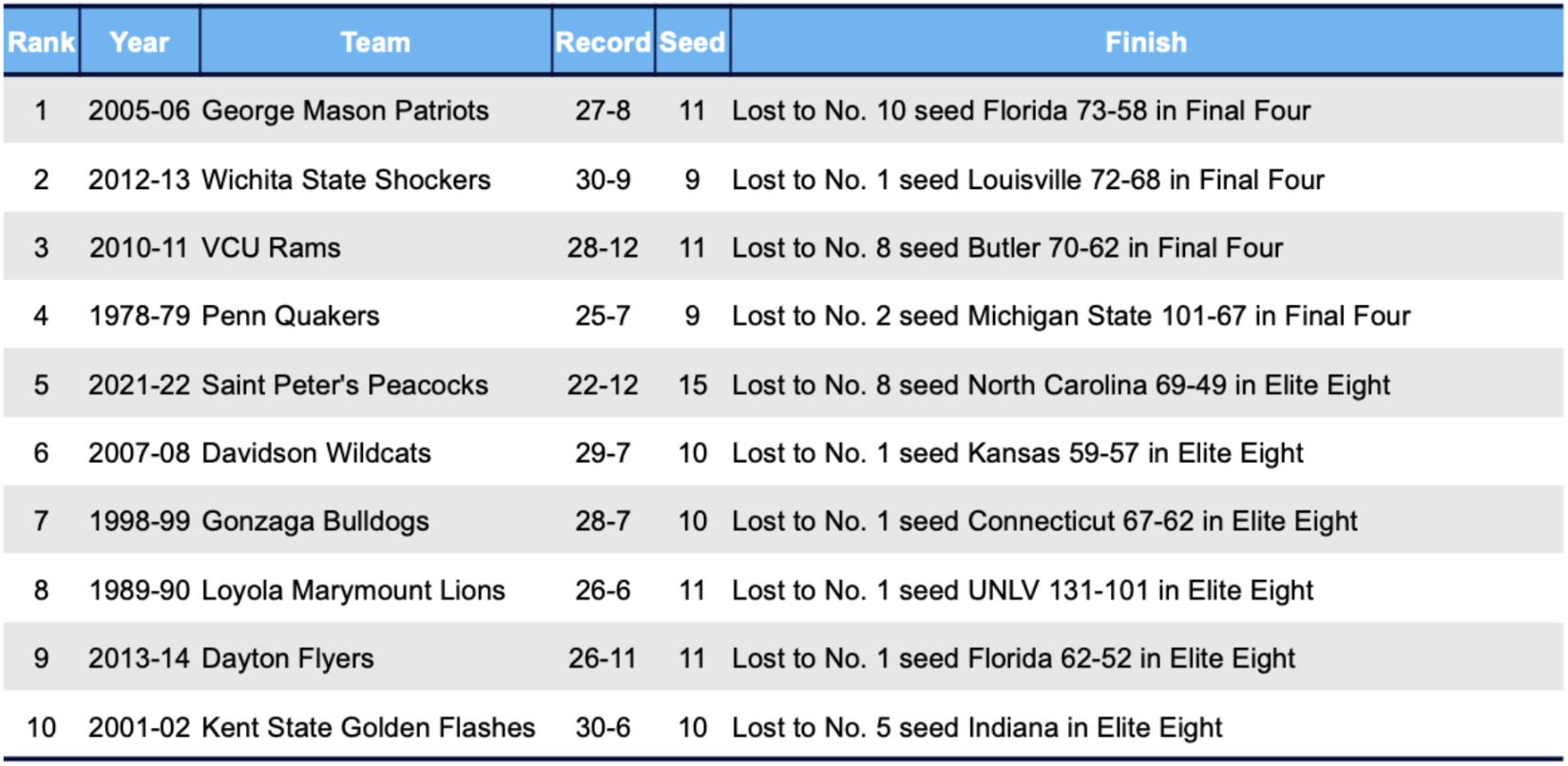
Source: https://athlonsports.com/college-basketball/10-greatest-cinderella-teams-ncaa-tournament-history
Developing a Successful Brand
In his blog titled Cinderella’s Loss, Ned Caron states, “There seems to be a strong correlation between participation in the NCAA basketball tournament and increased brand awareness, especially for smaller colleges and universities.”
In his book Same Players Different Game, John C. Barnes describes the four basic steps to develop a successful brand. The first two steps are foundational:
- Create brand awareness
- Create and maintain the image of the brand
St. Peter’s University and Loyola University Chicago have leveraged their basketball teams’ NCAA tournament appearances to drive cognizance of their brands. They used contrasting approaches to enhance their brand imagery.
St. Peter’s University in the 2022 Tournament
Cinderella teams contribute to the first step of creating brand awareness for their schools. One example is Saint Peter’s University in last year’s tournament. It entered the tournament as a 15 seed and advanced to the Elite Eight. As shown below, the private Jesuit university located in Jersey City, New Jersey reached approximately 500,000 Google searches during the NCAA tournament in March 2022. A large number of these searches were in the school’s home state of New Jersey and surrounding states.
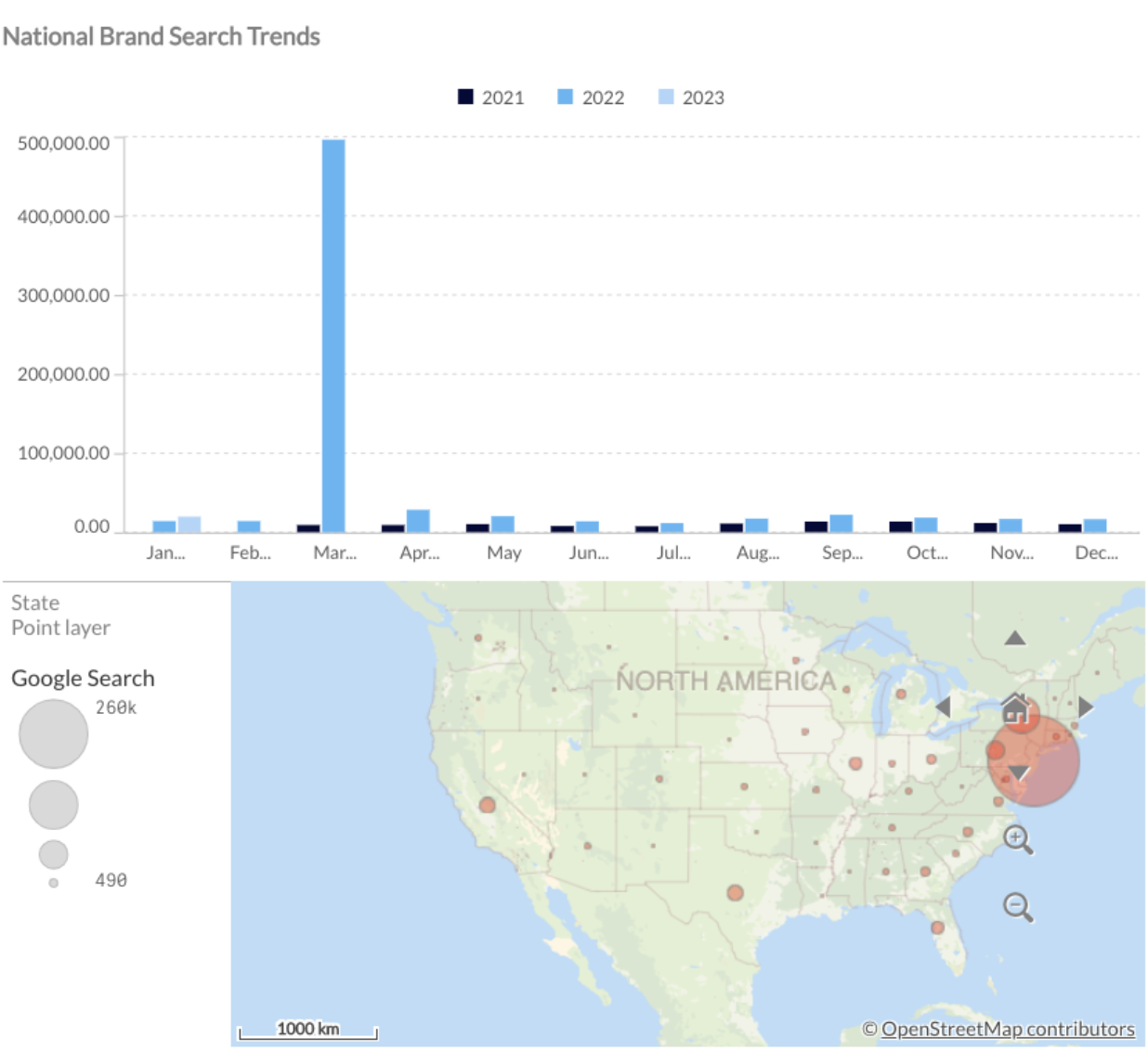
Source: Gray’s Keyword Search Dashboard
The school’s unique mascot – the peacock (pictured below) – was showcased throughout the tournament. This contributed to the second step of creating and maintaining the image of the brand.
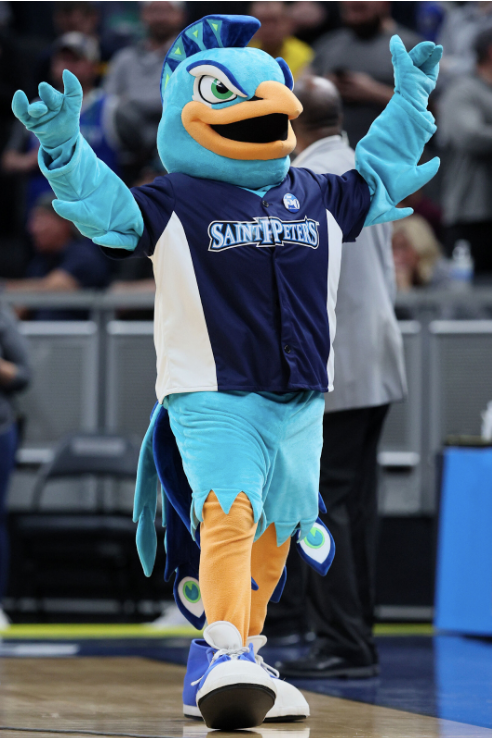
Source: cbs2iowa.com
Loyola University Chicago in the 2018 Tournament
Another example of a Cinderella team contributing to a school’s brand is Loyola University Chicago. It entered the 2018 tournament as an 11 seed and advanced to the Final Four. The creation of this brand awareness had a significant impact on student demand. The following year, applications for admission increased by 49 percent overall (46 percent for males and 50 percent for females).
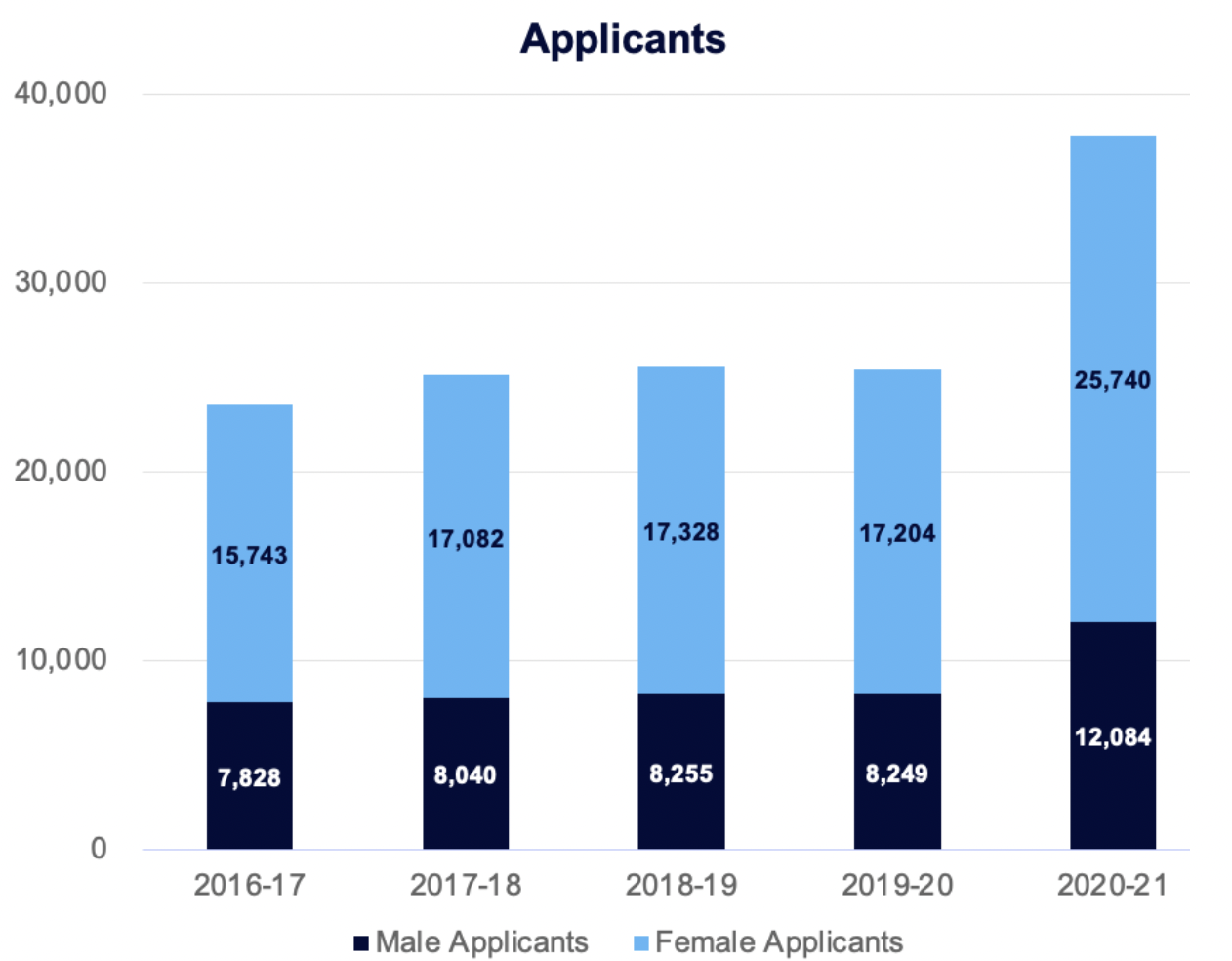
Source: Gray’s analysis of IPEDS data
This increased the caliber of students seeking admission, with ACT composite test scores increasing the following year from 25 to 27 for the 25th percentile and from 31 to 32 for the 75th percentile (source: IPEDS).
According to the school’s audited financial statements, during the same time period, gifts increased by 67 percent in 2017-18 over the prior year.
In addition to building brand awareness, the school created an image of the brand. Almost overnight Sister Jean (pictured below), the school’s 98-year-old chaplain who accompanied the team, became a household name. She was featured in dozens of stories from CNN and the New York Times to People magazine and ESPN.
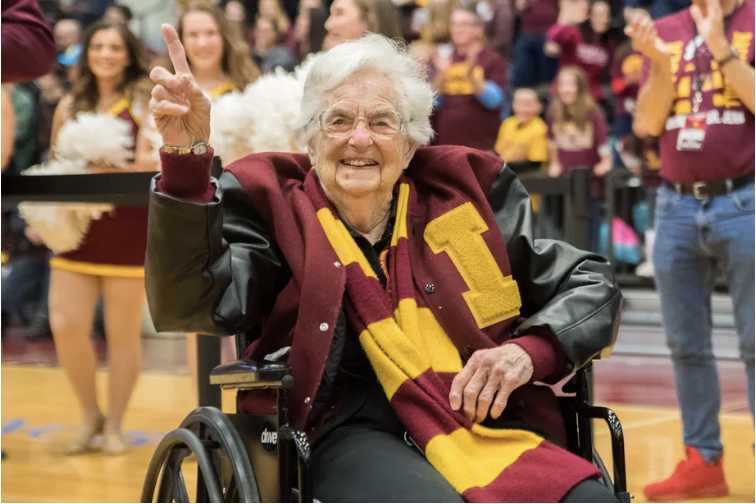
Source: sbnation.com, photo courtesy of Patrick Gorski-USA TODAY Sports
Who Will Be This Year’s Cinderella Team?
The field is now set for this year’s tournament. I did some research and picked a few lesser-known teams that I feel may make a deep run in the tournament.
Commentary provided by ESPN.com.
13-seed Kent State Golden Flashes. With 2 minutes, 59 seconds to play on the road at Houston in late November, Kent State’s VonCameron Davis hit a 3 that tied the game at 41-41 apiece. The Golden Flashes held a 10-point lead in the first half, too. They would eventually lose 49-44. With 3:41 to play on the road at Gonzaga a week later, they led the Bulldogs by four points before falling 73-66. Those competitive displays were not flukes. The Golden Flashes are 10-1 in their last 11 games. Sincere Carry (17.3 PPG) is the best player for a team that’s top-30 in adjusted defensive efficiency on KenPom, and a potential problem for a first-round opponent.
12-seed Charleston Cougars. Pat Kelsey doesn’t try to hide his game plan every night. The Cougars shoot a lot of 3s, more than 47 percent of their field goal attempts. That’s more than almost every team in America. The Cougars have made just 33 percent of those attempts, but they’re relentless. In the three CAA tournament games they played, Kelsey’s squad shot 91 treys. They can also let them fly because, led by Dalton Bolon (12.3 PPG) and Ante Brzovic (11.6 PPG, 5.9 RPG), they play fast (top-30 tempo) and boast a top-40 offensive rebounding rate. That game plan has been successful for a team with just two losses since Nov. 11.
9-seed Florida Atlantic Owls. For most, a seven-game winning streak would be proof they peaked at the right time. FAU has been playing at this level all season. A 20-game winning streak that began in November and was snapped in early February proved the Owls were not only top of the class in the C-USA; they were a mid-major worth watching as Selection Sunday approached. In a nine-game stretch from Feb. 1 to March (in which they finished 7-2), the Owls shot 56 percent from 2 and 39 percent from 3, per barttorvik.com. Both Johnell Davis (13.4 PPG, 40 percent from beyond the arc) and Alijah Martin (12.6 PPG, 5.2 RPG) were all-Conference USA first-teamers. The 25th-ranked team according to KenPom is a good example of a mid-major that might not have faced the toughest schedule but has the metrics to suggest it can compete with the top teams in America.
What Does Cinderella Get for Arriving at the Dance?
As we’ve seen with St. Peter’s University in the 2022 tournament and Loyola University Chicago in the 2018 tournament, schools with Cinderella teams have much to gain. Punching a ticket to the Big Dance can prove to be more effective than a well-funded marketing campaign in driving increases in school merchandise sales, Google searches, donations, and applications.
Schools looking for increased brand recognition from athletic achievements should benchmark themselves against other schools. They can see how they rank in terms of cost per participant, cost per sport, and more. Benchmarking enables them to assess what sports are performing well versus the ones that need further assistance. Would you like to size up your school’s athletic team expenditures relative to your competition? Click here to learn more.




